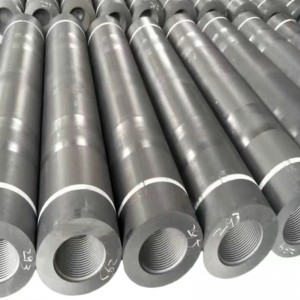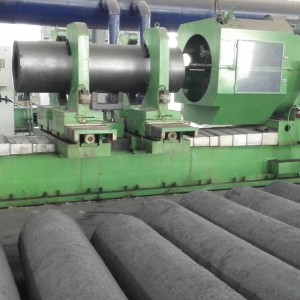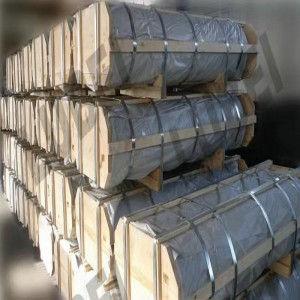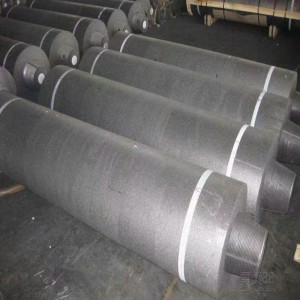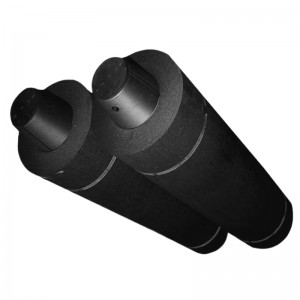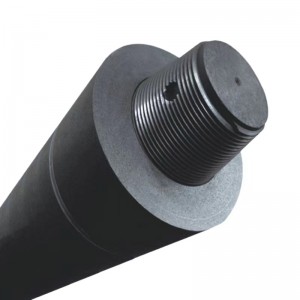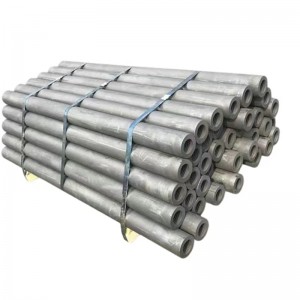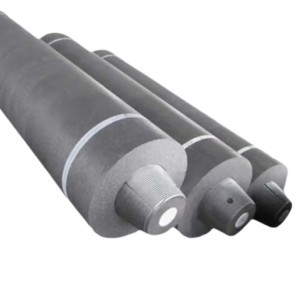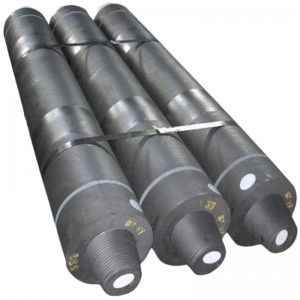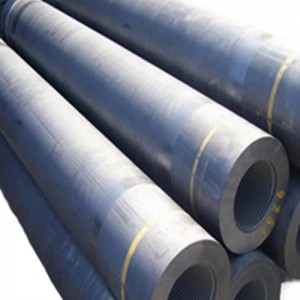HP24 Graphite Carbon Electrodes Dia 600mm Electrical Arc Furnace
Technical Parameter
|
Parameter |
Part |
Unit |
HP 600mm(24”) Data |
|
Nominal Diameter |
Electrode |
mm(inch) |
600 |
|
Max Diameter |
mm |
613 |
|
|
Min Diameter |
mm |
607 |
|
|
Nominal Length |
mm |
2200/2700 |
|
|
Max Length |
mm |
2300/2800 |
|
|
Min Length |
mm |
2100/2600 |
|
|
Current Density |
KA/cm2 |
13-21 |
|
|
Current Carrying Capacity |
A |
38000-58000 |
|
|
Specific Resistance |
Electrode |
μΩm |
5.2-6.5 |
|
Nipple |
3.2-4.3 |
||
|
Flexural Strength |
Electrode |
Mpa |
≥10.0 |
|
Nipple |
≥22.0 |
||
|
Young’s Modulus |
Electrode |
Gpa |
≤12.0 |
|
Nipple |
≤15.0 |
||
|
Bulk Density |
Electrode |
g/cm3 |
1.68-1.72 |
|
Nipple |
1.78-1.84 |
||
|
C.T.E. |
Electrode |
×10-6/℃ |
≤2.0 |
|
Nipple |
≤1.8 |
||
|
Ash Content |
Electrode |
% |
≤0.2 |
|
Nipple |
≤0.2 |
NOTE:Any specific requirement on dimension can be offered.
How to Match Graphite Electrode with Electric Arc Furnace
Graphite electrodes are crucial components in the Electric Arc Furnace (EAF) steelmaking process. However, the cost of the steelmaking process is affected by electrode oxidation, sublimation, dissolution, spalling, and breaking. The good news is that graphite electrode selection, use, and maintenance can effectively reduce electrode consumption. In this article, we will discuss how to choose the right graphite electrode and how to maintain it properly to get the most out of your investment.
Specifications
Matching between electric furnace capacity, transformer power load and electrode size.
|
Furnace Capacity |
Inner Diameter (m) |
Transformer Capacity (MVA) |
Graphite Electrode Diameter (mm) |
||
|
UHP |
HP |
RP |
|||
|
10 |
3.35 |
10 |
7.5 |
5 |
300/350 |
|
15 |
3.65 |
12 |
10 |
6 |
350 |
|
20 |
3.95 |
15 |
12 |
7.5 |
350/400 |
|
25 |
4.3 |
18 |
15 |
10 |
400 |
|
30 |
4.6 |
22 |
18 |
12 |
400/450 |
|
40 |
4.9 |
27 |
22 |
15 |
450 |
|
50 |
5.2 |
30 |
25 |
18 |
450 |
|
60 |
5.5 |
35 |
27 |
20 |
500 |
|
70 |
6.8 |
40 |
30 |
22 |
500 |
|
80 |
6.1 |
45 |
35 |
25 |
500 |
|
100 |
6.4 |
50 |
40 |
27 |
500 |
|
120 |
6.7 |
60 |
45 |
30 |
600 |
|
150 |
7 |
70 |
50 |
35 |
600 |
|
170 |
7.3 |
80 |
60 |
--- |
600/700 |
|
200 |
7.6 |
100 |
70 |
--- |
700 |
|
250 |
8.2 |
120 |
--- |
--- |
700 |
|
300 |
8.8 |
150 |
--- |
--- |
|
Instruction For Handing And Using
- 1.Remove the protective cover of the new electrode hole, check whether the thread in the electrode hole is complete and the thread is incomplete, contact the professional engineers to determine whether the electrode can be used;
- 2.Screw the electrode hanger into the electrode hole at one end, and place the soft cushion under the other end of the electrode to avoid damaging the electrode joint; (see pic1)
- 3.Use compressed air to blow the dust and sundries on the surface and hole of the connecting electrode, and then clean the surface and connector of the new electrode, clean it with a brush; (see pic2)
- 4.Lift the new electrode above the pending electrode to align with the electrode hole and fall slowly;
- 5.Use a proper torque value to properly lock electrode; (see pic3)
- 6.Clamp holder should be placed out of the alarm line. (see pic4)
- 7.In the refining period, it is easy to make the electrode thin and cause breaking, joint fall off, increase electrode consumption, please don’t use electrodes to raise carbon content.
- 8.Due to the different raw materials used by each manufacturer and the manufacturing process, the physical and chemical properties of electrodes and joints of each manufacturer. So in use, under general circumstances, Please don’t mixed use electrodes and joints produced by different manufacturers.









